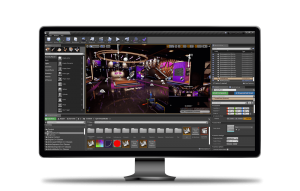With so much happening in the world right now, it’s more important than ever to stay connected with family and friends. Thankfully, there are dozens of live streaming services that make it easy to do just that. In this blog post, we’ll take a look at the top 5 live streaming services for 2022.
#1- Skype: Skype is a popular live streaming service that has been around for many years. It’s great for groups of friends or family members who want to stay in touch via video call. It’s also great for business meetings or calls with clients. Best of all, it’s free to use!
#2- Zoom: Zoom is another popular live streaming service that is perfect for business meetings or calls. It’s also great for staying connected with family and friends. One of its best features is its screen sharing capabilities, which make it easy to share presentations or photos with others on the call. Zoom offers both free and paid plans.
#3- FaceTime: FaceTime is a live streaming service that comes pre-installed on all iPhones and iPads. It’s perfect for one-on-one calls with family members or friends who also have Apple devices. FaceTime is free to use.
#4- Google Hangouts: Google Hangouts is a great option for those who want to stay connected with family and friends who do not have Apple devices. It’s also perfect for business meetings or calls. Google Hangouts offers both free and paid plans.
#5- WhatsApp: WhatsApp is a popular messaging app that also offers live streaming capabilities. It’s perfect for staying in touch with loved ones who don’t live near you. WhatsApp offers both free and paid plans.
The Difference Between Streaming and Broadcasting
You may have heard the terms “streaming” and “broadcasting” used interchangeably when referring to live video content, but there is actually a big difference between the two. Here’s a quick rundown of the key differences between streaming and broadcasting:
Broadcasting refers to one-way communication, where a signal is sent out from a main source (like a TV or radio station) and received by many people. Streaming, on the other hand, is two-way communication between the streamer and the viewer.
In order to broadcast live video, you need expensive equipment like cameras, wires, and towers. Streamers can broadcast live video using just an internet connection and a computer or mobile device.
Broadcasts are typically scheduled in advance and watched by viewers at the same time. Streams can be watched live or recorded for later viewing. However, most streamers will interact with their viewers in real-time through chat features.
Finally, broadcasts are typically one-way communication from the broadcaster to the viewer. Streamers, however, often encourage feedback and interaction from their viewers.
How Streaming Works
In order to understand how streaming works, it’s helpful to know a little bit about the technology behind it. When you watch a TV show or listen to the radio, you are receiving a signal that was encoded using an analog format. This means that the signal is converted into electrical impulses that are then sent over the airwaves.

The problem with analog signals is that they are subject to interference, which can result in poor picture quality or audio distortion. Additionally, analog signals can only be transmitted over short distances without losing strength. This is why you can only pick up radio stations within a certain radius of your location.
Streaming video uses a digital format instead of an analog format. This means that the signal is converted into binary code (ones and zeroes) before it is transmitted. The advantage of this digital format is that it is much less susceptible to interference than an analog signal. Additionally, digital signals can be transmitted over long distances without losing strength. The disadvantage of digital signals is that they require more bandwidth than analog signals. Bandwidth is simply the amount of data that can be transferred over a network in a given amount of time. Most home internet connections have enough bandwidth to stream SD (standard definition) video without any issues. However, HD (high definition) video requires more bandwidth and may result in buffering if your internet connection isn’t fast enough.
The Difference Between Hybrid Live Streaming Service and Live Streaming Production Services
If you’re in the market for a live streaming service, you may be wondering what the difference is between hybrid live streaming service and live streaming production services. To help you make an informed decision, let’s take a look at the key differences between these two types of services.
Hybrid Live Streaming Service
A hybrid live streaming service combines the best of both worlds: the quality of a professional production with the flexibility of a live stream. Hybrid live streaming services are ideal for businesses that want to produce high-quality live content but don’t have the in-house resources to do so.
Live Streaming Production Services
Live streaming production services offer a more comprehensive solution for businesses that want to produce professional-grade live content. While hybrid live streaming services can be a great option for smaller businesses, live streaming production services are really designed for larger organizations that have the budgets and manpower to support a full-fledged production. So, which one is right for you? If you’re looking for a flexible solution that doesn’t require a lot of manpower or resources, then a hybrid live streaming service is probably your best bet. On the other hand, if you have the budget and in-house resources to support a full-fledged production, then you should go with a live streaming production service



